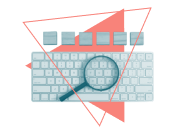Know Your Customers in 2025: Real Insights for a Market That’s Changed
Key Points
-
Recession-era buyers move slower and think deeper. Adapt your funnels to reflect hesitation, emotional friction, and trust gaps — not just conversion goals.
-
Emotional segmentation is the new competitive edge. Target your messaging based on how people feel (curious, cautious, skeptical), not just who they are.
-
Survival comes from listening, simplifying, and building safety into your offers. In uncertain times, people don’t want flash — they want clarity, reassurance, and a reason to trust you.
The other day, I was talking to a friend — another business owner — about how different things feel now.
We’ve both seen the shift: tech is moving fast, buyers are hesitant, new tariffs are coming, and people are holding onto their money.
No one’s buying like they used to. And the truth is, if you don’t know exactly what your customers are thinking, feeling, or afraid of right now… it’s easy to get lost.
I’m not talking about surface-level data.
I mean the real stuff — their hesitations, their frustrations, their late-night search history.
If you want your marketing to work in 2025, it’s not about being louder — it’s about being sharper.
More honest.
More human.
This isn’t a trend article.
This is about how to actually understand people, so you can build the kind of funnel and business that still stands when everything else gets shaky.
Know What They’re Not Saying Out Loud
When times are tough, people stop sharing openly — but their behavior speaks volumes.
✅ Watch where they hesitate on your site ✅ Pay attention to repeat visits without action ✅ Track unsubscribes and bounce rates with context
People aren’t just price-sensitive — they’re trust-sensitive.
Your job is to figure out: Where does their trust break down?
Use open-ended questions, comment boxes, and post-purchase check-ins.
Go where your customers are talking (Reddit, DMs, reviews) and listen without trying to sell.
Run Surveys That Get Real Answers
Don’t just ask, “Are you happy?” Ask:
- What almost stopped you from buying?
- What would’ve made this easier?
- What would make you come back?
Surveys in 2025 need to be emotionally intelligent. People are burned out — respect their time. Make it short, specific, and transparent about how you’ll use the info.
✅Tools to try: Typeform, Hotjar, Google Forms, in-email pulse surveys
How to Design Smarter Surveys
- Always clarify the purpose: “We’re asking because we actually plan to use your answers.”
- Include a mix of yes/no, multiple choice, and 1–2 open-ended questions.
- Offer a small reward (discount, download, bonus content) for completion.
✅Tip: Use logic branching so people only see questions relevant to their experience.
What Is Customer Discovery (CusDev)?
Customer discovery (CusDev) is the process of learning directly from your potential customers — not just what they say they want, but what they actually need, fear, and struggle with.
The goal is to touch the nerve — to uncover real motivations, hidden objections, and the pain points they’re not saying out loud.
Unlike standard surveys or demographic research, CusDev is about empathy over assumptions.
It’s one of the most valuable tools for shaping your product, messaging, and funnel around what actually matters to the people you’re trying to serve.
You’re not asking “Would you buy this?” — you’re asking, “Tell me about the last time you faced this problem.”
How to Conduct It
- Start with a small group: 5–10 conversations is enough to spot patterns.
- Ask open-ended, past-behavior-focused questions (avoid hypotheticals).
- Record calls (with permission) or take notes on exact phrases used.
- Summarize what you learn into themes: emotional triggers, language patterns, core frustrations.
Use ChatGPT to Support the Process
- Ask: “Help me write 10 CusDev questions to uncover emotional pain points around [topic].”
- After interviews, input notes and prompt: “What objections, fears, or unmet needs do these answers reveal?”
- Use ChatGPT to cluster responses into segments — anxious, frustrated, informed, or ready-to-buy.
This isn’t about doing research for research’s sake — it’s about creating products, copy, and funnels that meet people right where they are.
Use AI as your assistant when reviewing responses or preparing questions:
- Ask ChatGPT: “Based on this response, what pain points are they really revealing?”
- Use it to summarize open-text answers into themes;
- Generate follow-up questions to use in one-on-one customer discovery calls.
You can even feed it multiple reviews or survey responses and ask:
“What emotional triggers and objections show up across these answers?”
This saves time — and it helps you spot insights that don’t always show up in raw data.
✅Tools to try: Typeform, Hotjar, Google Forms, in-email pulse surveys
Rebuild Funnels for How People Buy Now
Your funnel isn’t broken — your timing might be.
One of the frameworks I rely on is the Awareness Ladder, developed by Ben Hunt.
It’s a simple but powerful way to understand where your audience is mentally and emotionally — and how close they are to making a purchase.
There are five main stages of awareness:
- Unaware — They don’t even know they have a problem yet;
- Problem-Aware — They feel the problem but don’t know the solution;
- Solution-Aware — They know solutions exist but not yours;
- Product-Aware — They know your offer but haven’t committed;
- Most Aware — They just need a reason to buy now.
What I do is meet people exactly where they are on this ladder. That’s the foundation of how I rebuild funnels.
In a potential recession, buyers move slower through these stages. They:
- Linger longer in awareness;
- Need more reassurance;
- Delay decisions even if they’re interested.
So your job isn’t to push — it’s to guide.
✅ For Unaware/Problem-Aware: create middle-funnel content that builds trust (behind-the-scenes videos, comparison charts, honest education)
✅ For Product-Aware: shorten bottom-funnel content — focus on clarity, not hype. Answer objections, simplify the CTA.
✅ For Most Aware: add frictionless next steps: “Not ready yet? Here’s how to stay in the loop.”
It doesn’t matter what’s happening in the economy — people still need solutions.
But your success depends on knowing what they need right now, how aware they are, and what’s standing between them and the next step.
Segment by Emotion, Not Just Demographics
Demographics are a start — but emotional state tells you what kind of message they’re ready for.
You might have:
- Curious Explorers (new visitors, unsure what they want;)
- Anxious Browsers (cart visits but no checkout;)
- Cautious Buyers (reading reviews, comparing options.)
Each one needs a different message.
✅Example: A cautious buyer doesn’t need another product highlight — they need social proof, a FAQ, or a customer testimonial that sounds like them.
Use Social Media Like a Listening Tool
It’s not just about showing up. It’s about tuning in.
✅ Use Instagram polls to test messaging ✅ Read the comment sections — even competitors’ ✅ Save recurring objections or pain points for future content
When people stop engaging, ask: Are we talking about what they care about, or just what we want to promote?
Reward Feedback With Value
If someone takes the time to share what’s not working — reward that.
Offer a coupon for survey feedback Send a free guide based on their quiz results Let loyal customers beta test a new offer
When you turn listening into action, customers notice. And they stick around.
Build Offers That Feel Safe — Not Risky
Recession psychology is real. Buyers want:
- Less financial risk;
- More clarity;
- Flexible options.
Tactics that work:
- Clear refund policies;
- “Try before you buy” offers;
- Entry-level versions of your main offer.
Help them say yes without fear.
Pull Language From the Ground, Not the Boardroom
Some of the best copy I’ve ever written came straight from a review.
✅ Audit your testimonials for repeated phrases;
✅ Use buyer’s actual words in landing pages, emails, and ads;
✅ Record calls or Zooms with prospects — listen for tone, hesitation, word choice
When customers see their own language reflected back, it builds instant trust.
Offer Less, Say More
Recession-proof messaging is not about doing more. It’s about saying the right thing.
Don’t list 10 features — highlight 1 benefit they’re desperate for;
Don’t publish 4 blogs a week — write 1 that touches a nerve;
Don’t crowd your homepage — make the offer obvious.
Simplicity builds confidence.
Think Long-Term (Even When Sales Are Down)
Some of the most loyal customers I’ve ever had came during tough seasons.
You may not convert them today — but how you show up now will determine who trusts you 3–6 months from now.
Keep sending value. Keep answering questions. Keep showing up.
Final Thought: This Is When Strategy Becomes Survival
This isn’t just about marketing smarter. It’s about staying human in the middle of uncertainty.
You don’t need to guess what your customers want.
You need to ask. You need to listen.
And then build your funnel, your offers, your voice — from that place.
Because right now, your customers aren’t looking for a brand that “gets it right.” They’re looking for a brand that gets them.
And when you become that — recession or not — you’ll keep growing.
Let’s do more of that.























